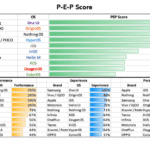Technology has been a central theme for budgets for some time now. This year’s budget is no different by defocusing on this important enabler. The budget presented on 23rd July points out some directional themes giving us an understanding how important tech is going to remain in India’s growth and development henceforth. Yes, in the interim they may not seem to be rewarding but if we look at a longer horizon, we get an understanding about how technology is deep integrated.
The vision of Viksit Bharat is unthinkable without tech and this budget reiterates it. Here are some of the key takeaways for technology and digital sector.
- In Next Generation Reforms, Economic Policy framework for overarching reforms does recognise technology as a factor of production. This is significant as we move from traditional definition of economy where land, labour & capital was everything.
- Digital Public Infrastructure is seen as an important enabler. Not only is a DPI for agriculture aiming to cover 400 districts in 3 years envisaged, but there is also reference of creating DPI in social sectors including education and healthcare. This is important from the point of view of creating harmonised and standardised infrastructure for creating various applications on top of it helping speedy digital transformation of these sectors.
- E-commerce is seen as an important enabler for artisans and craftspeople helping them to connect with the market and buyers. The budget talks about creating digital marketplaces in export hubs of the country that will lead to direct to customer for artisans who otherwise have to go through a complex and controlled value chain of exporters and marketers.
- As our dependence on technology increases, our energy needs also rise. PM Surya Ghar Muft Bijli Yojna aiming 1 crore households to get 300 free units is an attempt to democratise power generation from renewable sources. The Pumped Storage Policy will help further rationalise the production and consumption where in many cases of renewable energy, storage is inefficient and challenging. There is also mention of small and molecular nuclear reactors that can also add substantially to our rising energy needs.
- IP and product development has been a weak area for us. Anusandhan National Research Fund (ANRF) for basic research and prototype development is a welcome thought. There will also be attempt to promote private sector driven R&D at commercial scale for which 1 lakh crore fund is being setup.
- Space economy is an important area to look at in terms of futuristic growth areas. The government wants 5x growth in it in next 10 years. In this direction plans to set up a VC fund of 1,000 crore will be a great starting point.
- Using digital means for land records and management is also a potential game changer to end up a very complex and complicated land record and management archaic system presently relied upon. Be it in rural areas for creation of Unique Land Parcel Identification Number (ULPIN) or Bhu-Aadhar, digitisation of cadastral maps, or urban land record management with GIS mapping, both will bring a lot of ease and transparency in land management.
- Use of tech in labour management and taking it step further by integrating e-shram portal with several other portals will help in holistic use of this portal. At the same time Open architecture databases for rapidly changing labour market, skill requirements, and creating of marketplace/ exchange will help the job and skills market significantly.
- Data and statistics is key to effective and holistic socio-economic planning and decision making. Use of tech in data and statistics including databases established under Digital India mission will not only help ultra rich data for accurate and precise planning but also open avenues for data analytics and use of AI in it.
- Reduction of BCD on mobile phones (CBUs) does not align with the ongoing efforts of the government to promote domestic manufacturing and ‘Make in India’. This will only benefit brands primarily making smartphones in ultra-premium segments. There has also not been any consumer demand to ease out pricing in this segment. Hence, this step does not seem to help any consumer interests.
- The reduction of BCD in mobile PCBA and chargers is a welcome step. This can overall help OEMs to reduce / save prices by 1.5-2%. While they may not be keen to pass this on to consumers as it hardly will make any noticeable difference on the retail prices, the $40 billion industry can create a collective corpus of $400-500 million and utilise it towards 5G smartphone affordability, especially in sub ₹10,000 price segment. This will help to speed up the process of migration towards 5G, while we still have approx. 450 million smartphone users on 4G.
- Increase in BCD of PCBA of specific telecom equipment is also not a very industry friendly step. The operators have just increased the tariffs in the hope of improving their financial health. In the absence of availability of quality telecom equipment in adequate volumes within the country, the operators will continue to rely on imports. This could further force them to increase the service costs.
Overall, the budget does include the important ingredients of technology and digital sector that will play a significant role in the long-term growth and development of the country, in the interim many things could have been addressed holistically for the immediate needs of the sectors. Also, a lot of intends expressed will result in positive outcomes basis their execution, which can only be judged once implemented.






One response to “Decoding the technology theme of Budget 2024”
Very well articulated. Logical and convincing post.